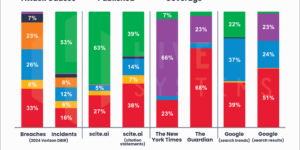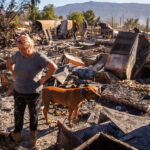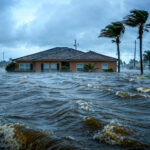 Catastrophe risk modeling firm AIR Worldwide released a Crop Hail Model for Canada to provide crop insurers with a probabilistic view of crop hail risk in Canada.
Catastrophe risk modeling firm AIR Worldwide released a Crop Hail Model for Canada to provide crop insurers with a probabilistic view of crop hail risk in Canada.
Based on 10,000 simulations of potential annual hail activity, the crop model enables insurers and reinsurers “to assess the likelihood of a wide range of losses, including larger losses than have been experienced by the industry, providing a complete view of risk to crop hail portfolios,” said Boston-based AIR, which is a unit of Verisk Analytics.
“Hail is a significant peril in Canada, causing damage to crops as well as to property and vehicles,” said Ken Doleman, president and CEO, Palliser Insurance Co. “A thorough understanding of this complex peril is evident in the new, sophisticated crop hail model from AIR. This innovative model will help us make better underwriting decisions and model our portfolios more reliably. As a result, we can provide the best hail policies to protect the farm customer’s hard work.”
The model’s catalog of simulated events does not rely exclusively on records of past hail events and weather patterns, said AIR, noting that it also includes extreme, but realistic events outside the historical record that could have occurred given daily atmospheric conditions experienced during recent years.
The model’s probabilistic view of potential hail activity provides a robust view of the risk of loss for the coming season to crop hail contracts in Alberta, British Columbia, Manitoba, New Brunswick, Nova Scotia, Ontario, Prince Edward Island, Quebec, and Saskatchewan, the company said.
The model takes into consideration the unique impacts hail can have on various types of crops, including barley, canola, corn, flax, lentil, oats, pea, potato, soybean, and wheat, which are each explicitly modeled. Losses to all other Canadian crops are modeled implicitly, it continued.
“While severe thunderstorms with large hailstones can destroy entire crop fields, even smaller storms with smaller hailstones can critically injure plants, tearing leaves or bruising stems, and thus put a dent in crop yield,” said Dr. Jeffrey Amthor, principal scientist, AIR Worldwide. “AIR’s new crop hail model provides an in-depth understanding of where crop hail damage occurs in Canada and why and how crop damage varies by crop species and developmental stage.”
Users of AIR’s Crop Hail Model for the United States now have an expanded view of North American crop hail risk because the models for Canada and the U.S. use the same 10,000-year hail catalog, covering the contiguous United States and nine southernmost Canadian provinces, AIR explained.
“The continuity will be particularly useful for insurers and reinsurers that underwrite exposures in both the U.S. and Canada and for brokers that prepare submissions for companies in both countries,” said Amthor.
“Although straight hail insurance policies are currently written only for the Canadian prairie provinces, the model accounts for six other Canadian provinces with crop exposure. In addition, because the AIR Crop Hail Model for Canada and the AIR Severe Thunderstorm Model for Canada use the same hail catalog, users of AIR’s CATRADER software can easily evaluate combined property and crop losses annually by province,” he added. (The Crop Hail Model for Canada is currently available in CATRADER Version 19.)
Update to Multiple Peril Crop Model for China
In addition to the introduction of the Crop Hail Model for Canada, AIR completed an update to the Multiple Peril Crop Insurance Model for China, which is included in CATRADER 19.0.
The historical catalog was updated to include historical experience through 2015, for both crops and forests. The model’s crop industry exposure database was also updated using the most recently available China Statistical Yearbook, which is current up to 2015.
Additionally, policy conditions were updated to reflect 2016 values. The update introduces two new features: comprehensive forestry loss estimates to better estimate losses to insurance policies that offer comprehensive coverage (including wind, fire, and disease/pest perils) and a new custom loss catalog, allowing users for the first time to input a custom set of deductibles and estimate losses in real-time.
Source: AIR Worldwide




















 Wildfire Smoke’s Health Risks Linger Long After Homes Escape Burning
Wildfire Smoke’s Health Risks Linger Long After Homes Escape Burning  National Flood Insurance Program Authorized to Continue Through Mid-March
National Flood Insurance Program Authorized to Continue Through Mid-March  What’s Not Changing in 2025: Homeowners Outlook, Re Retentions
What’s Not Changing in 2025: Homeowners Outlook, Re Retentions 




